- Bowmore
- Ardbeg
- Bruichladdich
- Bunnahabhain
- Caol Ila
- Kilchoman
- Lagavulin
- Laphroaig
Flamingo Yachts Guide to the Isle of Islay
Start planning your next big trip to Islay!
January 24th, 2019
admin
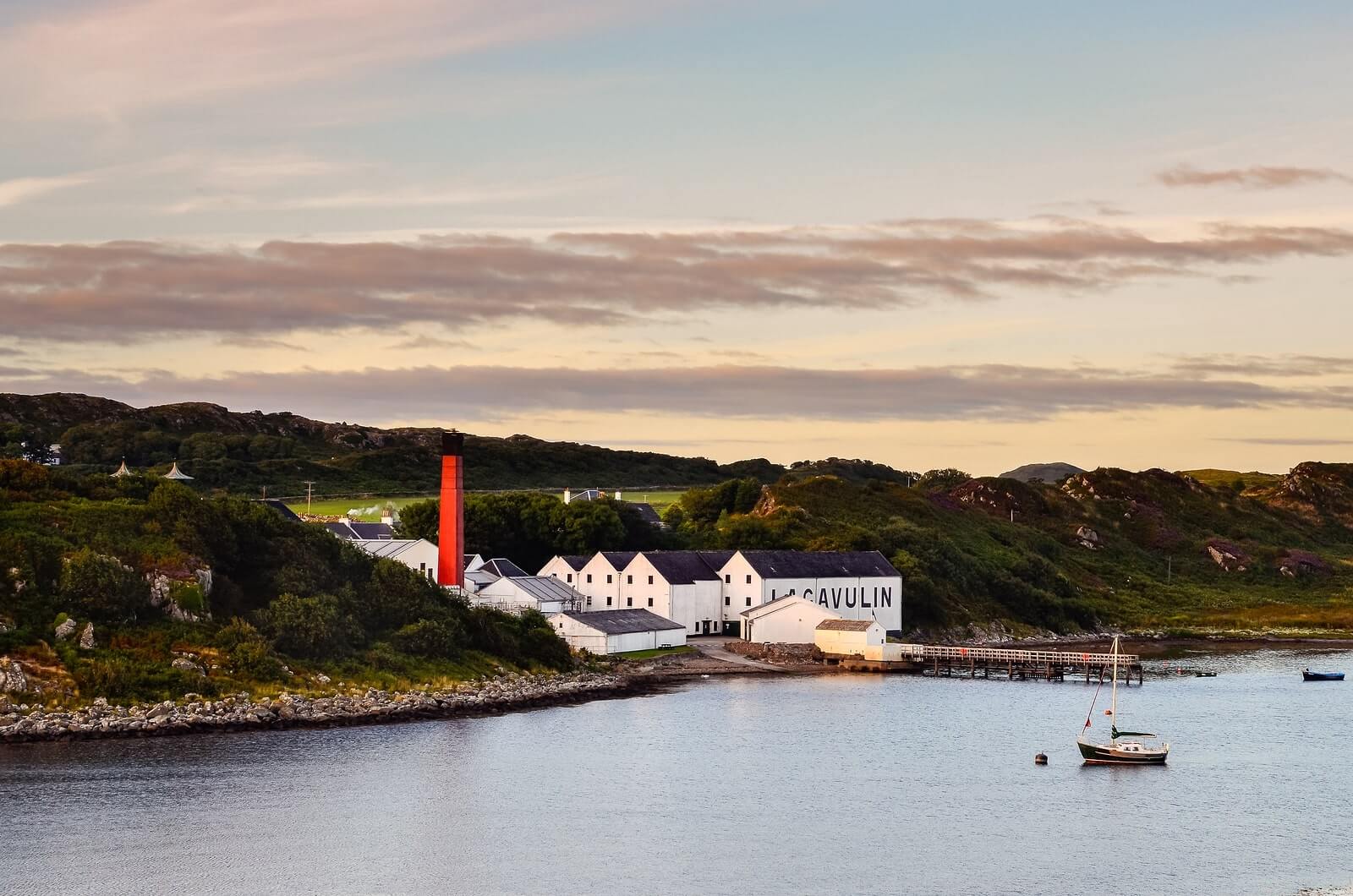
Lagavulin distillery and harbour, on Islay
The Isle of Islay is one of the most beautiful places in Scotland and it’s a popular tourist destination — especially with whisky enthusiasts. Islay is an island of outstanding natural beauty, with over 130 miles of coastline, a diverse range of birdlife and marine life, and a rich whisky heritage. In our West Coast of Scotland whisky sailing guide, we went into a little detail about this incredible island, but we’d like to take a little more time to focus on Islay with this guide. We don’t have time to write an entire guide book about visiting Islay (but we’d love to!), but we hope this brief guide will help a few readers plan their next big trip to Islay.
How to pronounce Islay?
The first thing many outsiders wonder about Islay is how to pronounce it. To the uninitiated (non-Scottish), or to someone who has only ever read about the island, it seems like it should be pronounced eye-lay, or perhaps even is-lay. There’s no shame to getting this wrong, but you’ll want to get the right pronunciation before you visit and meet the locals. Islay is pronounced eye-la, or you may like to think of it as isle-ah. There are a few ideas about where the name and its pronunciation comes from, but the prominent theory is that it that it had been called Ilea and that Islay was the anglicised spelling. In Gaelic, Islay is Ìle and it’s pronounced ee-leh. However, you should probably just say isle-a — after all, you wouldn’t call Ireland Éire, would you?
A little background about Islay
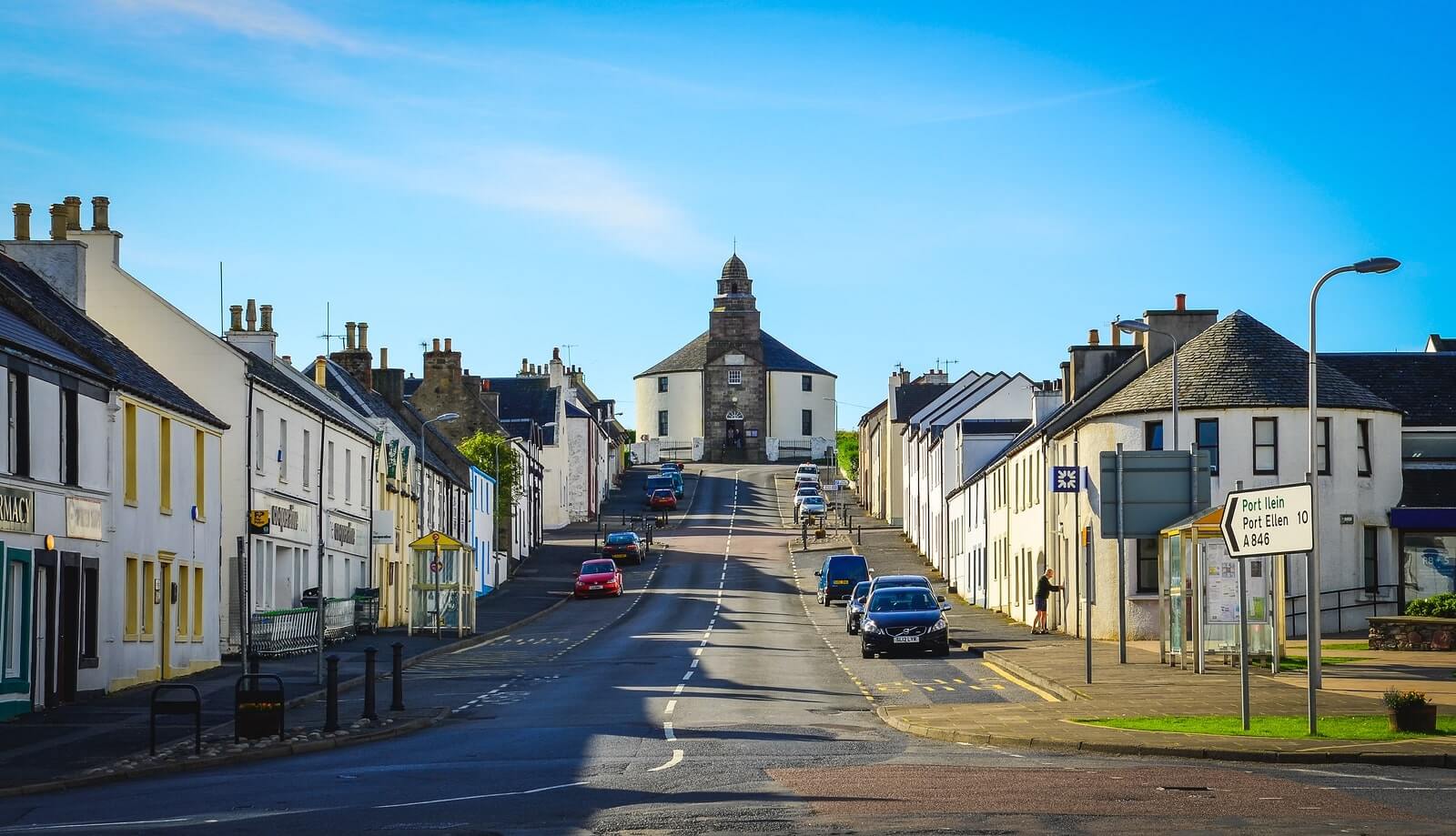
The town of Bowmore, Islay
As we mentioned in the introduction, Islay has over 130 miles of beautiful coastline, and this makes it particularly special for anyone who likes to sail. The character of the coast changes as you make your way around the island. You’ll find plenty of guillemots and razorbills on the western coast of the island, and you’ll find two sea lochs, one on the north coast and one on the south. There is convincing evidence that Islay has had human inhabitants since approximately 7500 BC and people have lived on Islay ever since. There are various ruins and not-so-ruined stone structures from the Neolithic era and the Bronze Age; this makes Islay perfect for anyone fascinated in pre-history. Islay also has the only intact Celtic cross in all of Scotland, which you’ll find at the medieval Kildalton Parish. Islay used to be an important location for Scotland’s medieval politics, and it was often referred to as the Lord of the Isles.
How do you get to Islay
Another question lots of people have when visiting any of the Scottish islands is: how do you get there? Islay is the most southerly island in Scotland’s Inner Hebrides islands, on the West Coast of Scotland. It’s just to the southwest of the Isle of Jura and it is very close (25 miles) to the north-east coast of Northern Ireland. The quickest way to get there is to fly, but the flights can be a little expensive. The most common way to get there is by ferry from Kennacraig to either Port Askaig on the north of the island or Port Ellen to the south. You can ride the ferry as a foot passenger or with a car. However, it can be much more expensive to take the car on the ferry, so it may be worthwhile simply getting the bus to Kennacraig.
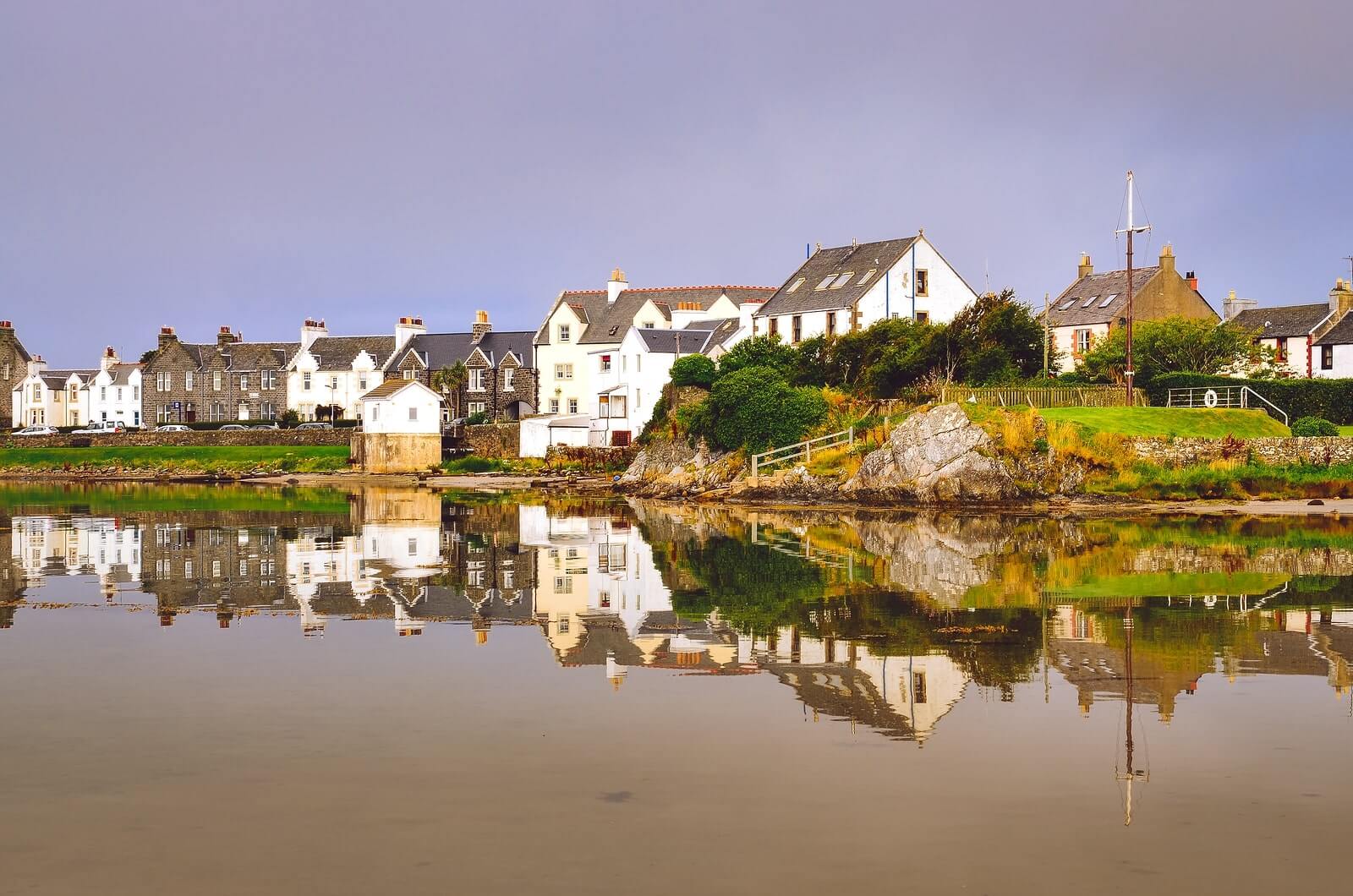
View of Port Ellen, from the water
However, given Islay’s expansive coastline, rich marine life, and quality anchorages, we think that the best way to get to Islay is to sail. The trouble with only walking around Islay is that you don’t get to see what the coast looks like from the water, and sailing Islay’s coastline is the perfect way to explore the coast’s nooks and crannies, including its two large sea lochs. If you choose to sail to Islay, you’ll probably sail from our base at Largs and you’ll have a huge range of anchorages to choose between, but you’ll reach Port Ellen first of all and it has very high-quality facilities, so you might find it more convenient to finish each day’s sailing at Port Ellen. If you’re planning to visit Islay’s various famous distilleries, you’ll find anchorages at all of them except Laphroaig. But Laphroaig is incredibly close to Port Ellen, so it has never needed its anchorage and you won’t need one either.
Guide to Islay Whisky
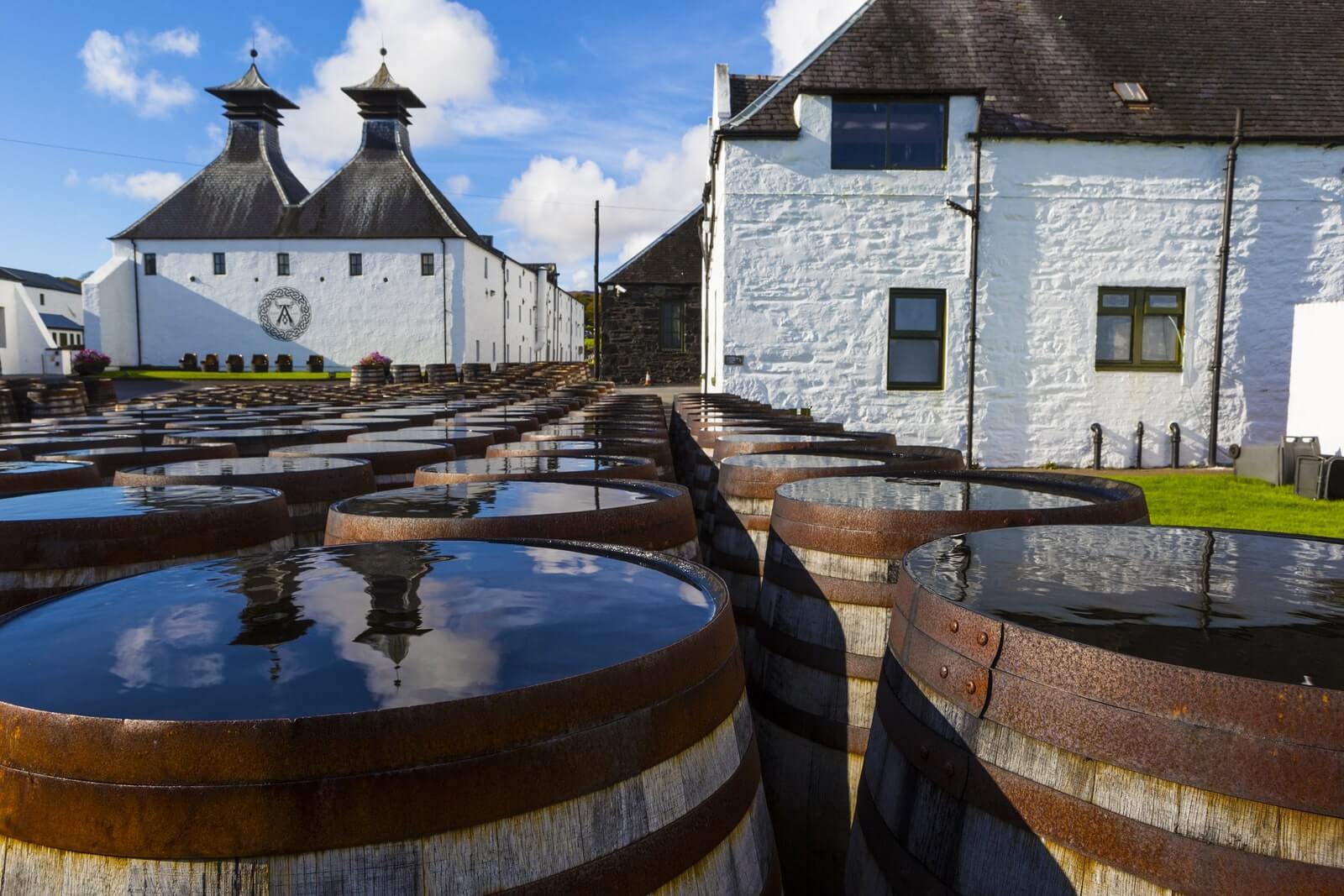
Ardbeg whisky distillery
Islay is famous for its whisky distilleries. In fact, Islay is one of Scotland’s key whisky regions; Islay whiskies are such an important part of Scotland’s heritage (and economy) that they’re protected by law. With eight distilleries packed into just 239 mi², Islay is a whisky lover’s dream holiday location. You can visit all of the distilleries and take a tour. Most people have one or two favourite Islay whiskies in mind when visiting the distilleries, but it’s possible to tour all of them if you stay for a few days. The eight famous Islay whisky distilleries are as follows:
One thing Islay whiskies are famous for is the smoky flavour created by the peat smoke used during the barley’s drying process. The peat comes from Islay and it has its own unique chemical composition, making Islay whisky impossible for any other distillery to reproduce. The smokiest, peatiest whiskies can all be found on the south of the island: Laphroaig, Lagavulin, and Ardbeg. Islay’s whiskies are famous for their strong peaty flavours, and this is exactly what most people love about them, but some people dislike this peaty flavour and the good news is that there are plenty on unpeated whiskies, if that’s your preference. Bruichladdich and Bunnahabhain, for example, have some incredible unpeated whisky.
Birdwatching on Islay
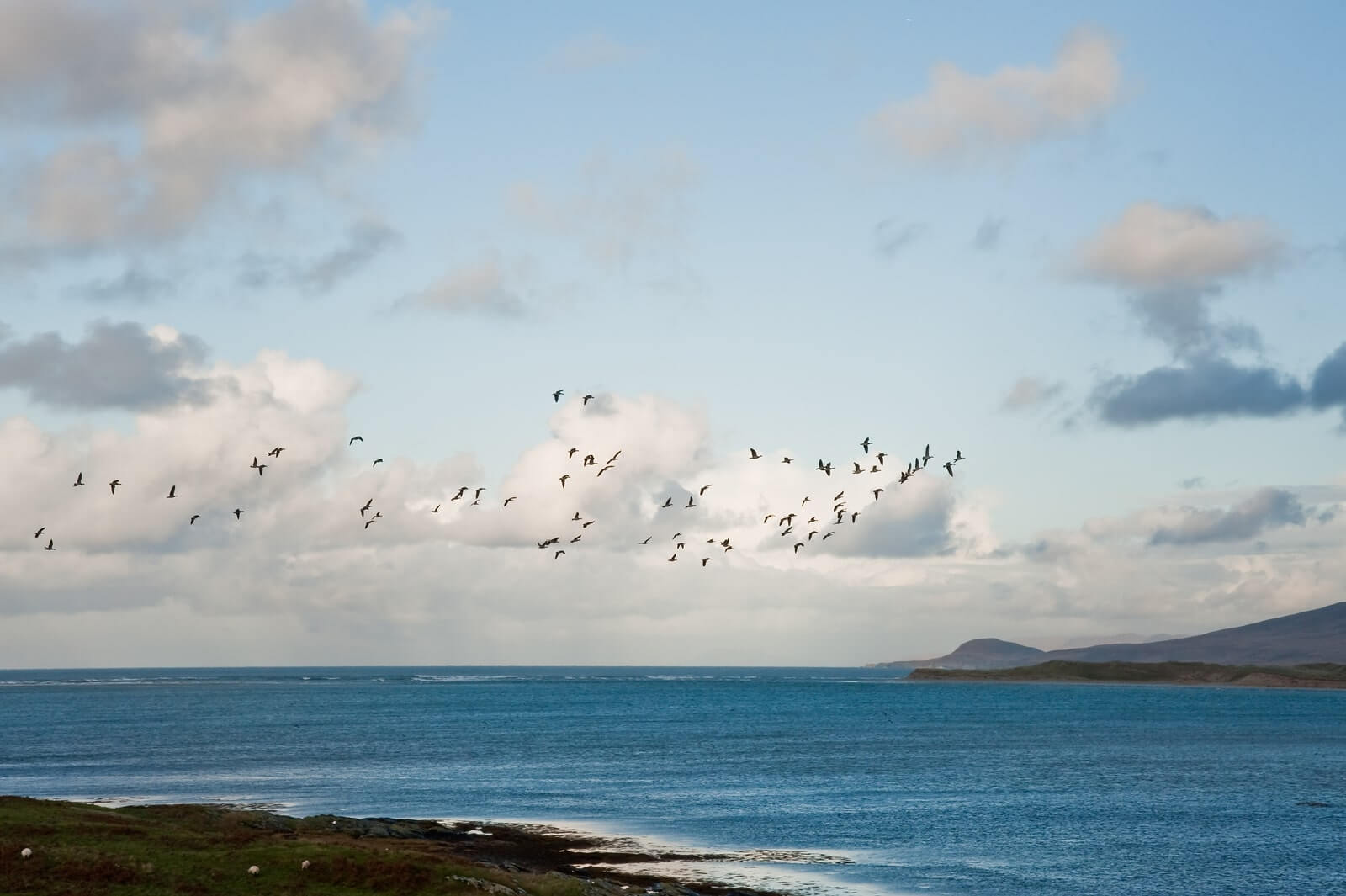
Flying wild geese over Islay
If you’re not a big fan of whisky — or if you want to do something other than drink whisky and visit the island’s various distilleries — there are plenty of other things to do and see on Islay. Birdwatching is an extremely popular activity on Islay, due to the huge variety of rare birds that visit the island at different times of the year. Birds come to Islay from various places because the island has a great range of ideal bird habitats. Birdwatchers flock to Islay to catch a glimpse of the diverse range of grebes, ducks, divers, and wild barnacle geese (the geese are everywhere!) that roost in the sea lochs. Inland, you’ll find grey wagtails, tree pipits, and garden warblers — to name only a few. And on the west coast of the island you can find huge numbers of razorbills and guillemots; you’ll also find smaller numbers of kittiwakes. The truly special bird on Islay, however, is the chough. This rare species can be found on the west side of the island. Many birdwatchers come just for the chough. For much more detailed information about birdwatching in Islay, visit the Scottish Ornithologists’ Club Islay guide.
Enjoying the views on Islay
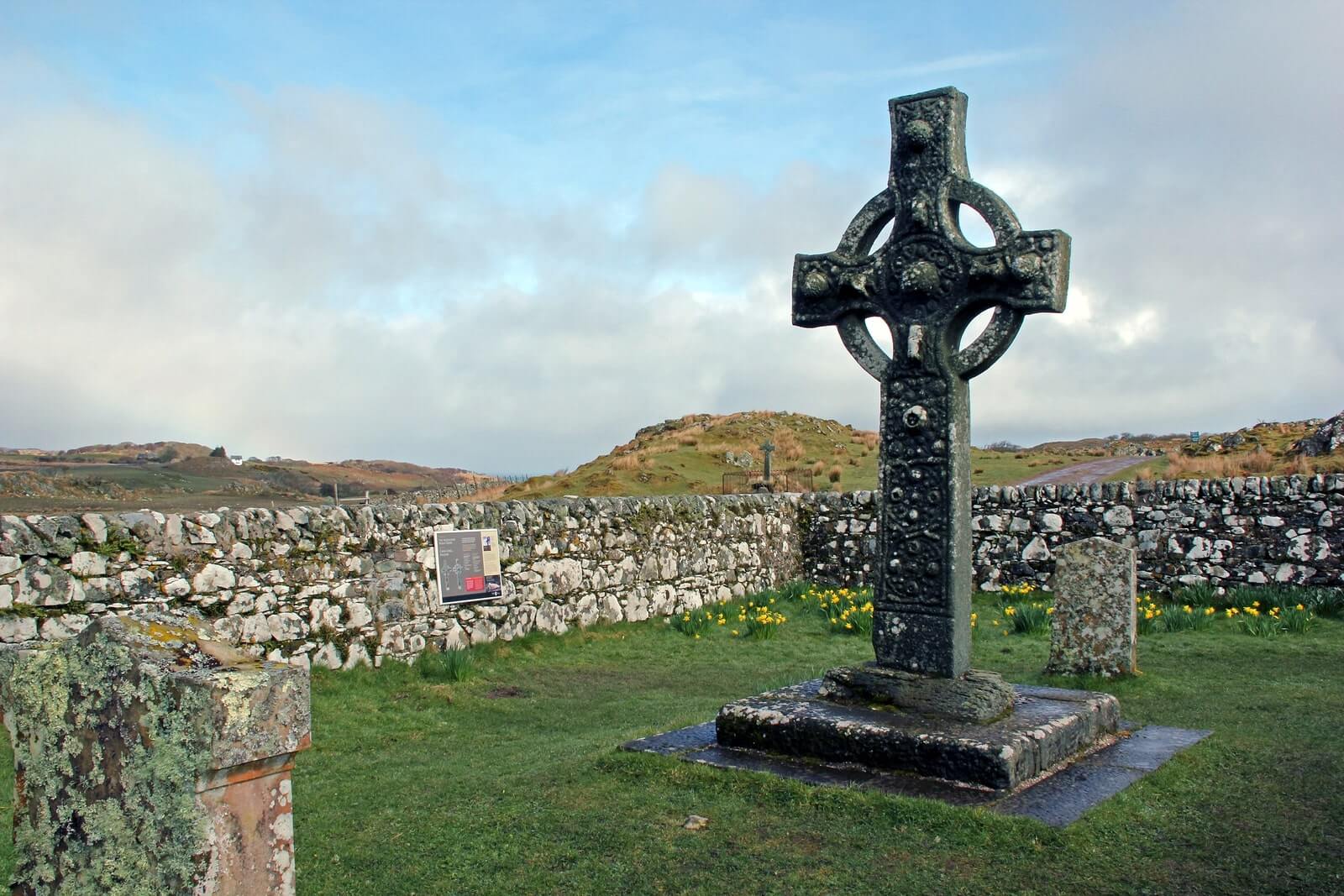
The Kildalton Cross, Islay
In terms of scenery, Islay is widely regarded as one of the most beautiful locations in Scotland. Most people visit the Scottish Highlands and its islands for the views, for the incredible scenic coastline and wild countryside. Islay is held up in the same regard as the likes of Hull and Skye — two of Scotland’s most popular tourist destinations, famous for their wild, idyllic beauty. One of the striking things about Islay is the distinct lack of trees. This allows you to see far ahead, getting a good lay of the land. Make sure to take plenty of pictures of the beautiful views — especially on Machir Beach and the two sea lochs: Loch Gruinart and Loch Indaal. The views of Kildalton Parish and the Kildalton Cross that we mentioned earlier are also well worth a visit.
That’s all we have time for today. We hope this guide to Islay has inspired a few readers and helped some people plan their next big trip. Islay is a very special place and we’ve really only scratched the surface with this guide. If you’re planning on sailing to Islay yourself and you’d like to charter a yacht, please follow our booking process or get in touch if you have any questions or issues. It’s easier than you think to plan a sailing trip to Islay!
Sign up to our newsletter &
Get Great Deals